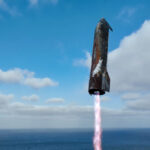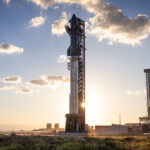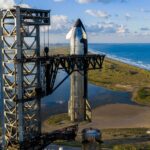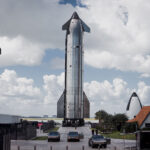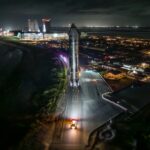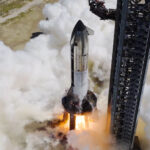SpaceX performed a static fire test on its Starship Super Heavy Booster 9 rocket yesterday. This test was performed with all 33 engines installed on Booster 9 (B9).
According to SpaceX, only 29 engines functioned successfully during the test, the rest of the 4 were shut down for either technical reasons or did not fire at all. Earlier this year, Booster 7 successfully fired 31 engines in its static fire test before the 1st Starship orbital flight attempt.
The static fire test was next in line as the space company completed the repairs and development of the new OLM water deluge system last week. SpaceX also tested the new and upgraded deluge system as well but no engines were fired.
The true test of the deluge system could only be performed when the booster engines were thrusting heat downwards. Since SpaceX is hurrying the next Starship orbital flight test, yesterday’s Booster 9 static fire also acted as a test bed for the new deluge system.
As a safety measure, Boca Chica County released a notification to the residents of the Boca Chica village to remain outside of their homes during this massive test. Since this was a full spectrum static fire test using all 33 engines, such an impact can shatter window glasses, etc.
SpaceX released the following drone video of the Booster 9 static fire test on the social media platform X (Twitter). The footage shows that the entire test only lasted for about 13 seconds (Raptor engines were fired for only 2.7 seconds). The villagers of Boca Chica Beach had to endure the inconvenience for this short period. SpaceX runs a siren across the village during any major Starship test to alert the residents.
Booster 9 was loaded with liquid oxygen (LOX) and methane as propellant which is needed to fire the engines of the booster. Booster 9 was locked on the Starbase Orbital Launch Mount (OLM). SpaceX first triggered the deluge system that threw a huge amount of water underneath the OLM. Then the 33 Raptor engines were fired for the static fire test.
As we can see in the above video of the Booster 9 static fire test, massive clouds of mist formed around the OLM. This happened due to the sheer amount of heat thrust on the water coming out of the deluge system and vaporizing it.
NASASpaceFlight / YouTube recorded the Booster 9 static fire event from multiple angles through their ground cameras installed around Starbase. This gives us a better view of the firing sequence from various angles.
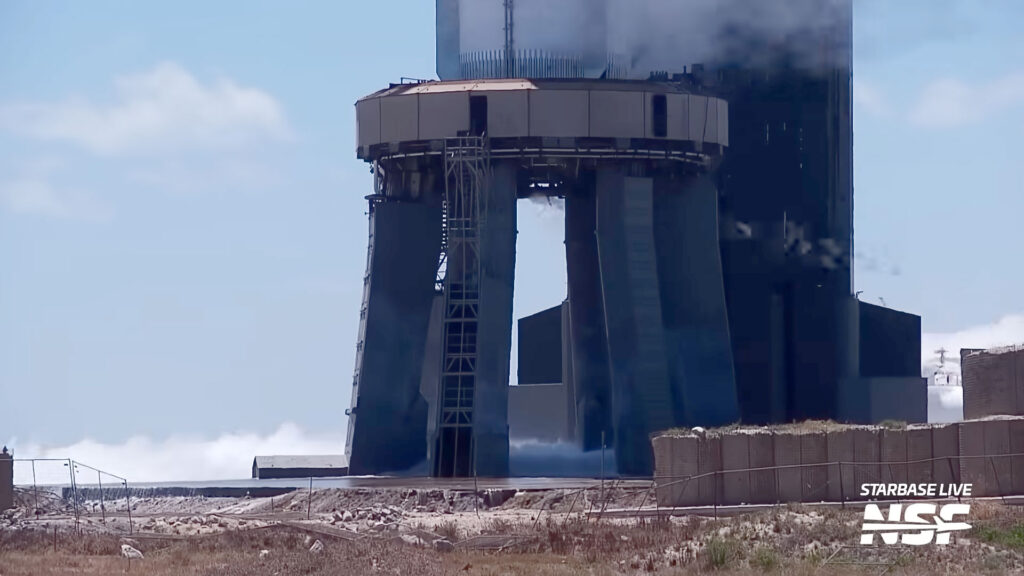
With the initial pictures of the OLM after the Booster 9 static fire test, the OLM seems to be in good shape. There is no launch pad damage that we saw after the first Starsbip flight test. So, the new Starship OLM water deluge system is apparently a successful experiment by SpaceX.
However, 29 engines firing for 2.7 seconds does not fully demonstrate the elongated engine firing at full thrust in a launch attempt. Perhaps, SpaceX will need to eject water from under the OLM for a longer period in a live flight test. For that, we will have to wait for the next Starship orbital launch test, so stay tuned as we report Starship development and flights.
Stay tuned for future updates on Starship and SpaceX, Follow us on:
Google News | X (Twitter) | Flipboard | WhatsApp Channel | RSS (Feedly).
Related
- SpaceX shares stunning videos of Flight 11 Starship and Booster 15 landings
- Starship Flight 11: Read live updates, watch live-stream recordings of the launch
- Starship Flight 11: Here’s how to watch the live-streams and get live updates
- SpaceX finalizes preps for Starship Flight 11 launch on 13th October (updates, video)
- SpaceX announces Starship Flight 11 date, launch preparations update from Starbase
- Flight 11 Ship 38 goes through a full duration static fire test, the last Block 2 Starship


